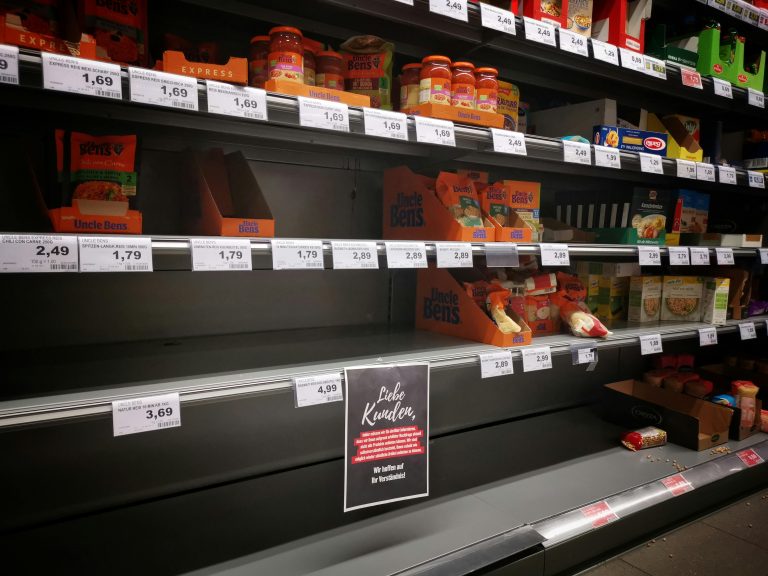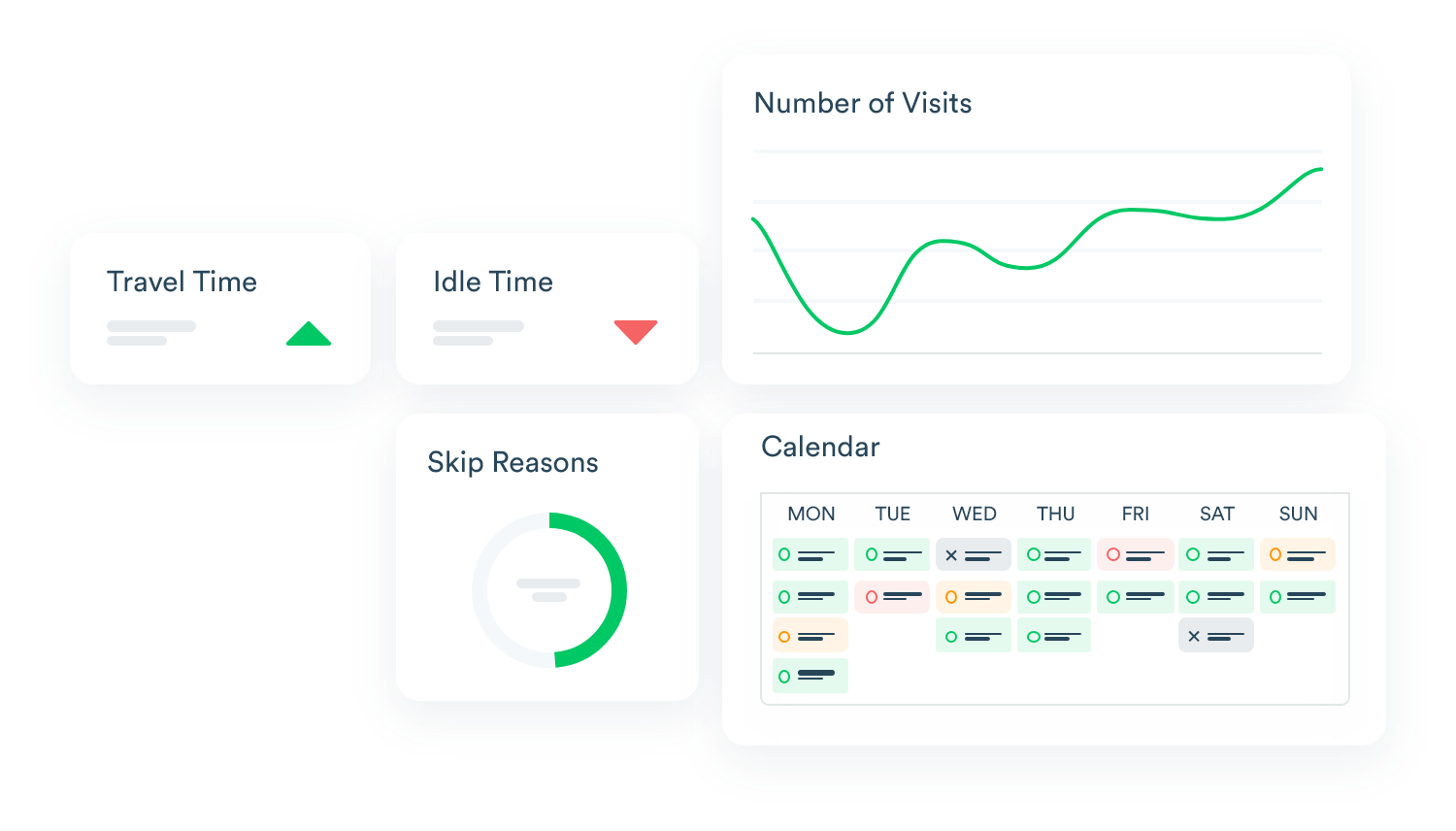Field team management presents a unique and complex set of challenges that traditional, office-centric methods are fundamentally ill-equipped to handle. These are not minor operational hurdles; they are systemic issues that create a high cost of disconnection, directly impacting productivity, profitability, and morale.
The Challenge of Invisibility and Lack of Tracking
For managers of dispersed teams, a fundamental and often frustrating question looms: “What are my employees doing all day?”. This is not a question born of a desire to micromanage, but from a critical need for visibility into performance, accountability, and resource allocation. Without a clear, objective system for tracking progress and evaluating performance, managers are left to make assumptions.
They may wrongly believe employees are underperforming or, more dangerously, mistakenly assume that critical job duties are being accomplished when they are not. This operational blindness has severe consequences, leading to missed client meetings, inefficient use of resources, and a lack of accountability for expenses like fuel claims and overtime, which can easily be exaggerated when not verified by objective data.
Field Team Communication Breakdown and Data Silos
When field and office teams operate as separate entities, communication inevitably breaks down. This fragmentation leads to a cascade of errors: scheduling mishaps, missed assignments, confusing or overlapping shifts, and incorrect task execution become commonplace. The problem is compounded when there is inconsistent access to mobile tools and technology across the team, creating a digital divide that prevents seamless collaboration.
This environment fosters the growth of data silos, where each department or even each individual operates with their own set of information. This fragmentation makes it impossible to establish a “single source of truth,” a unified data repository that ensures everyone is working from the same playbook. The result is conflicting information, poor cross-functional alignment, and ultimately, flawed strategic decision-making.
Data Inaccuracy and Manual Errors
The reliance on manual processes is a primary driver of inefficiency and financial loss in field operations. Manual data entry is notoriously prone to human error, which can cost small brands as much as 15% in potential revenue due to inaccurate reporting and flawed analysis.
The problem is pervasive across industries. In market research, for instance, nearly 60% of professionals report facing significant data quality challenges, ranging from incorrect sampling methods to fraudulent responses and response bias. While mobile data collection tools are designed to mitigate these issues by digitizing input at the source, they are not a panacea if implemented in isolation.
Without a robust and unified platform, field teams still face challenges like equipment failures, limited battery life, poor network connectivity in remote areas, and inconsistent data formats, all of which compromise the integrity of the data being collected.
Like what your reading?
Take a moment to subscribe before continuing and never miss out on exclusive insights, news, and case studies.
Declining Productivity and Employee Engagement
The tangible consequences of these interconnected challenges are a decline in productivity and a corrosion of employee morale. In the United States, overall technician productivity has seen a national decrease of 4%, with some regions experiencing drops as high as 7%. This is a direct result of the daily frustrations field employees face.
When workers are hampered by constant miscommunication, unrealistic schedules born from poor planning, or a lack of the necessary information to do their jobs effectively, their stress levels increase and their engagement plummets. This is a critical issue for any organization, as disengaged employees are less incentivized to produce quality work, are less likely to adhere to brand standards, and are far more likely to seek opportunities elsewhere, driving up costly employee turnover.
These challenges do not exist in isolation; they feed into one another, creating a vicious cycle that can cripple a field operation. It begins with a lack of visibility, which erodes a manager’s trust. This can lead to ineffective communication patterns, such as constant, disruptive check-ins, which employees perceive as micromanagement. This, in turn, fosters resentment and disengagement.
A disengaged employee is less likely to be meticulous with data entry or to go the extra mile to ensure perfect execution, leading to lower-quality data and performance. This poor performance, reflected in the (often inaccurate) data, then reinforces the manager’s initial lack of trust, perpetuating the cycle. A unified Field Team Management platform is designed to break this cycle.
By providing a transparent, objective, and shared data framework, it replaces subjective supervision with data-driven performance metrics, fostering a culture of trust and accountability for both managers and their teams in the field.

Merchandising: From Planogram Compliance to Perfect Store Execution
In the fiercely competitive world of retail, the shelf is the final and most critical frontier. It is where marketing strategies, brand promises, and consumer decisions converge. A failure at this final touchpoint nullifies all preceding investments. A comprehensive merchandising solution is therefore not a luxury, but a mandate for survival and growth, designed to combat the costly problems of empty shelves and poor brand presentation.
The Multi-Billion Dollar Problem of Empty Shelves
Out-of-stocks (OOS) represent one of the most significant and preventable sources of lost revenue in the retail sector. When a customer is ready to buy but cannot find the product, the sale is often lost forever. Research reveals that stockouts lead to an average of 4% in lost sales across all retail categories. For the high-velocity Consumer Packaged Goods (CPG) sector, this figure climbed to a staggering 7.4% in 2021. For a retail giant like Walmart, this problem translated into nearly $3 billion in lost potential sales in a single year.
The customer reaction to an empty shelf is swift and damaging to the brand. When faced with an OOS situation, 31% of shoppers will purchase a competitor’s product, 15% will delay their purchase, and another 9% will abandon the purchase altogether, resulting in a direct loss of the sale and margin. While external factors like supply chain disruptions play a role, a deep analysis reveals that 72% of all stockouts are rooted in manageable, in-store issues like faulty ordering and poor replenishment practices.
Planogram Compliance: The Blueprint for Profitability
A planogram is the strategic blueprint for shelf success, a detailed diagram dictating precisely how products should be arranged to maximize visibility and sales. The financial upside of executing this blueprint correctly is immense. According to the National Association of Retail Marketing Services (NARMS), achieving 100% planogram compliance can deliver a sales lift of 7.8% and a corresponding profit improvement of 8.1%.
Despite this clear financial incentive, compliance rates in the real world are shockingly low. Studies show that most product categories are less than 50% compliant with their prescribed planograms. Furthermore, this compliance degrades rapidly, with a benchmark study revealing that planograms go out of compliance at a rate of 10% every single week.
This rampant non-compliance not only directly contributes to the OOS problem by misallocating shelf space but also completely undermines the data-driven strategies and significant investments that CPG brands pour into their merchandising plans.
of product category planograms are not compliant with their prescribed planograms.
The Impact on Brand Perception
Effective visual merchandising is about more than just product placement; it is about shaping brand perception at the point of decision. Nearly 73% of customers admit to judging a brand’s quality based on the appearance of its physical retail space.
A well-organized and visually appealing store fosters trust and signals quality. The impact is measurable: using complementary colors in a display can increase sales by 35%, and simply ensuring a product is placed at eye level makes it 82% more likely to be purchased. Conversely, a cluttered, disorganized, or poorly maintained display erodes consumer trust and can do irreparable harm to a brand’s reputation.
The Merchandising Solution in Action
A modern merchandising solution, such as the one offered by Shelvz, is engineered to directly combat these challenges by transforming retail execution from a reactive, manual process into a proactive, data-driven discipline.
Real-Time Audits & On-Shelf Availability (OSA): Field representatives are empowered with mobile applications that allow them to conduct shelf audits in real-time. They can instantly capture photographic evidence of shelf conditions and log out-of-stock situations with a few taps. This data is transmitted immediately to a centralized dashboard, enabling managers to make swift decisions regarding restocking and distribution to close sales gaps before they widen.
Visual Intelligence for Planogram Compliance: The days of relying on slow, subjective manual checks are over. Advanced solutions like Shelvz leverage cutting-edge technologies like image recognition and visual intelligence to audit and verify planogram compliance in seconds. A field rep can simply take a picture of the shelf, and the AI-powered system analyzes it against the master planogram, instantly flagging misplaced SKUs, incorrect facings, or share-of-shelf discrepancies. This ensures that premium, high-margin products receive the visibility they were designed to have. The increasing reliance on this technology is reflected in the market size for planogram compliance analytics, which was valued at $532.2 million in 2022 and is projected to grow at a robust CAGR of 13.6% through 2030.
Proactive Expiry Management: For CPG and especially FMCG brands, managing product expiry dates is a critical component of stock auditing. Modern merchandising platforms seamlessly integrate routine expiry checks into the field team’s workflow. Representatives are prompted to scan or log expiry dates during their store visits, creating a real-time database of at-risk products. This allows managers to trigger timely actions like stock rotations, promotional discounts, or product pullbacks to minimize financial losses from expired goods and protect the brand’s reputation for quality and freshness.
The fundamental advantage of a technology-driven merchandising solution is its ability to radically compress the “data-to-action loop.” In a traditional model, there is a significant time lag between the moment an issue occurs in-store (e.g., an empty shelf), the time it is manually reported, the slow aggregation of that data, the eventual decision, and the final corrective action.
During this lag, which can last for days or even weeks, sales are continuously lost. A tech-enabled solution collapses this entire timeline. The identification, reporting, analysis, decision, and assignment of a corrective action can now occur within the same day, or in some cases, the same hour. This real-time capability is what turns a merchandising strategy from a static plan into a dynamic, responsive system that protects and grows revenue.

Trade Promotion: Maximizing ROI on the Aisle
Trade promotions are one of the most significant line items in a CPG company’s budget, representing a massive investment designed to drive sales, secure shelf space, and build brand loyalty. Companies typically invest between 15% and 25% of their gross annual revenue into these activities.
Yet, for many, this colossal spend operates like a black hole, consuming resources with little visibility into its actual effectiveness. A dedicated trade promotion solution is designed to bring light to this black hole, transforming speculative spending into a measurable and profitable growth engine.
The Black Hole of Trade Spend
The statistics on trade promotion inefficiency are alarming. Research indicates that an astonishing 72% of trade promotions conducted by U.S. companies actually lose money. Furthermore, studies show that nearly 60% of all promotions fail to even break even, meaning the incremental profit generated does not cover the cost of the promotion itself. This rampant waste of resources stems from a cascade of systemic failures in how promotions are planned, executed, and measured.
of promotions fail to break even.
Why Promotions Fail: A Cascade of Inefficiencies
The failure of most trade promotions can be traced back to a few core, interconnected problems that plague traditional approaches:
Lack of Data-Driven Planning: Many promotional calendars are built on simple historical precedent (“same as last year”) or managerial intuition, rather than rigorous data analysis. A 2023 report found that 43% of CPG brands still rely on disconnected spreadsheets for their Trade Promotion Management (TPM), a method that is incapable of adapting to shifting market trends, real-time competitor actions, or supply chain dynamics.
Poor Retail Execution: A brilliantly conceived promotion is rendered worthless if it is not executed properly at the shelf. This is a critical failure point where the strategy meets reality. Common execution issues include incorrect or missing promotional signage, products not being placed in the designated display, or insufficient stock to support the expected sales lift. When a promotion lacks visibility and availability in-store, its potential is nullified.
Inability to Measure ROI Accurately: This is perhaps the most critical failure. An incredible 60% of all trade promotions go completely unevaluated due to a lack of adequate analytical tools and trained staff. Without a systematic way to measure the true Return on Investment (ROI)—a calculation that requires comparing the incremental sales lift against a reliable baseline and accounting for all associated costs (discounts, slotting fees, display costs, etc.)—brands are essentially flying blind. They are unable to distinguish successful tactics from failing ones, leading them to repeat costly mistakes and miss opportunities for optimization.
The Modern Trade Promotion Solution
A dedicated TPM platform, such as the integrated solution offered by Shelvz, provides a comprehensive, end-to-end system to manage the entire promotion lifecycle with data-driven precision, from initial conception to final analysis.
Strategic Planning & Budgeting: The solution moves planning out of spreadsheets and into a dynamic, collaborative environment. It enables managers to set clear, measurable objectives (e.g., target sales lift), define specific target audiences, and allocate budgets with precision using calendar-based planning tools and contract management features. The most advanced platforms incorporate AI-powered optimization to analyze historical data and predict the outcomes of different promotional scenarios, ensuring resources are allocated to the channels and tactics with the highest expected return.
Execution and In-Flight Monitoring: This is where modern platforms create the most significant competitive advantage. By providing real-time tracking of sales data, inventory levels, and field-reported retail execution compliance, managers can monitor a promotion’s performance as it happens. Platforms like Shelvz provide detailed dashboards and integrate shelf availability audits to ensure promotions are not only active but also highly visible to shoppers.
Automated ROI Analysis: After a promotion concludes, the platform automates the complex process of Post-Event Analysis (PEA). It automatically calculates key performance indicators such as incremental sales volume, cost per incremental unit sold, market share changes, and the true, all-in ROI. This data-driven feedback loop is essential for continuous improvement. The impact is significant: leveraging advanced analytics can increase promotional ROI by 15-25%, and a well-managed TPM strategy can boost a company’s overall gross margin by up to 5%.
The most profound strategic shift enabled by a modern TPM solution is the transition from post-mortem analysis to in-flight optimization. The traditional approach is linear and slow: a promotion is planned, then executed, and then, weeks or months later, someone might try to measure its impact. If the promotion was a failure, the lesson is learned far too late, and the investment is already lost.
A modern, integrated solution creates a continuous, real-time feedback loop. Data from the field—a merchandiser confirming a display is set up correctly via a mobile app—is integrated with real-time sales data within the same dashboard.
A manager can therefore see not just that a promotion is underperforming in a certain region, but can immediately investigate why. If the execution data shows low compliance in that region’s stores, the manager can dispatch the field team to fix the specific in-store issues, potentially turning a failing promotion into a successful one before it’s too late. This ability to diagnose and treat promotional issues in real-time is what transforms trade spend from a gamble into a strategic investment.

Mystery Shopping: Evaluating & Elevating Customer Experience
In the pursuit of retail excellence, there is often a vast chasm between the experience a brand designs and the experience a customer receives. Internal reports, sales data, and even direct customer feedback can fail to capture the subtle, yet crucial, nuances of the in-store journey. Mystery shopping, a proven market research methodology, is specifically designed to bridge this gap. By deploying trained, anonymous evaluators, a mystery shopping software provides an objective, unbiased lens through which to measure and perfect the real-world customer experience.
The Tangible Benefits of Objective Evaluation
Unlike internal audits, which can be influenced by existing biases, or customer surveys, which rely on memory, mystery shoppers provide an unfiltered, in-the-moment account of a typical customer interaction. This objectivity delivers actionable insights that drive measurable improvements across the business. The results are not merely anecdotal; they are tangible and financially impactful. Case studies demonstrate that a well-executed mystery shopping program can lead to a
25% improvement in service quality for a clothing retailer, a 10% reduction in drive-thru wait times and a corresponding 8% sales lift for a quick-service restaurant (QSR) chain, and a 20% improvement in online review ratings for a hospitality group that used the findings to standardize procedures. These evaluations are instrumental in identifying specific employee training needs and uncovering operational issues—like long wait times or poor product availability—before they can inflict lasting damage on brand reputation and revenue.
Key Features of Modern Mystery Shopping Software
Legacy approaches to mystery shopping, which relied on paper forms and suffered from long time lags between the store visit and the data analysis, have been rendered obsolete by technology. A modern mystery shopping software platform, such as the one integrated into the Shelvz ecosystem, digitizes and streamlines the entire workflow for maximum efficiency and impact.
Customizable Mobile Forms and Questionnaires: Businesses can move beyond generic checklists and create detailed, custom evaluation criteria and scenarios. These can be tailored to the specific Key Performance Indicators (KPIs) of their industry, whether it’s assessing staff product knowledge in electronics, verifying cleanliness and ambiance in a restaurant, or ensuring promotional compliance in a grocery store.
Rich Data & Evidence Capture: To ensure the highest degree of objectivity and accountability, shoppers are equipped with a mobile app to complete their assigned tasks. This allows them to upload time-stamped and geo-tagged photographs, videos, and even audio recordings as incontrovertible evidence to substantiate their findings. This rich media capture provides context that a simple checkbox never could.
Real-Time Dashboards & Analytics: As soon as a shopper submits their report from the field, the data populates interactive, real-time dashboards. This empowers managers to instantly view results, filter data by region or KPI, benchmark performance across different locations, and quickly identify systemic issues or regional discrepancies that require attention.
Connecting Insights to Action
The true power of a modern mystery shopping solution is realized when it is integrated with a broader retail execution strategy. The data collected is not meant to live in a silo; it is meant to trigger action. For example, a mystery shopper’s report detailing a broken or missing promotional display can be configured to automatically generate a corrective action task and assign it to the appropriate field merchandiser within the very same platform. This seamless connection between identification and resolution ensures that insights are not just gathered, but are acted upon swiftly to improve in-store conditions.
This evolution transforms mystery shopping from a simple compliance-checking tool into a sophisticated strategic instrument for managing Customer Experience (CX). The richest insights emerge when the objective, observational data from mystery shopping—the “what is happening”—is layered with traditional Voice of Customer (VoC) data, such as Net Promoter Score (NPS) or Customer Satisfaction (CSAT) scores, which measure “how customers feel about what happened.” For example, a company might see its NPS score decline, but the VoC data alone may not reveal the specific cause.
By deploying a mystery shopping program focused on key customer journey touchpoints, the company can gather objective observational data. The reports might reveal a consistent failure point, such as employees neglecting to explain a new loyalty program at checkout. By integrating these two data sets, the company can diagnose the root cause of customer dissatisfaction with surgical precision. The problem isn’t a bad product; it’s poor execution of a key initiative. The solution is not a generic memo to “improve service,” but a highly targeted training program focused on the loyalty program script.
A unified platform like Shelvz, which can manage the mystery shopping audit, analyze the results, and then assign the corrective training tasks to the field team, makes this entire “diagnose and treat” cycle seamless and highly effective.
The Measurable ROI of an All-in-One Field Team Management Platform
The evidence is conclusive. In the modern retail environment, attempting to manage a dynamic, dispersed field team without a unified, data-driven technology platform is no longer a viable strategy—it is a significant competitive liability. The cost of inaction, measured in lost sales from out-of-stocks, wasted resources on ineffective promotions, and eroded customer loyalty from inconsistent in-store experiences, is simply too high to ignore. The transition from fragmented, manual processes to an integrated, automated system is not merely an upgrade; it is a strategic imperative for survival and growth.
The future of field management will be defined by even greater intelligence and automation. The industry is rapidly moving towards leveraging emerging technologies like Artificial Intelligence (AI) and Machine Learning (ML) to enable predictive visit planning, hands-free voice-based reporting, and autonomous optimization of routes and schedules. Leading industry analysts like Gartner have affirmed that AI-augmented platforms are the definitive future of Sales Force Automation, moving beyond simple task management to provide prescriptive guidance that enhances seller effectiveness.
In this evolving landscape, choosing a technology partner is as critical as choosing the technology itself. A platform like Shelvz, which is built from the ground up to be a flexible, all-in-one solution, positions businesses not just to meet the challenges of today but to capitalize on the opportunities of tomorrow. By offering an integrated suite of tools for merchandising, trade promotion, mystery shopping, and field sales, all empowered by a foundation of real-time data and advanced analytics, Shelvz provides the comprehensive visibility and control needed to achieve retail execution excellence. Adopting such a platform is the definitive step for any organization looking to move beyond simply managing its field teams to truly optimizing them for sustained success in a dynamic and fiercely competitive market.
Request a demo today to find out how Shelvz can revolutionize your field team management and streamline your retail execution operations.



